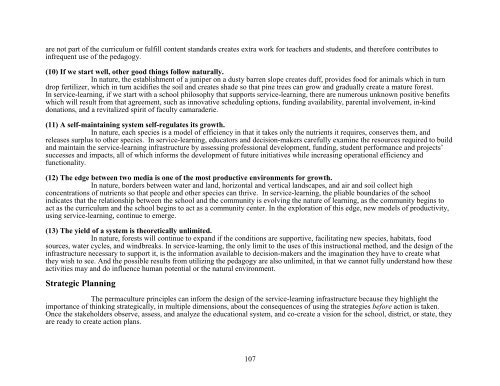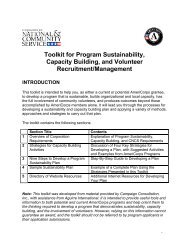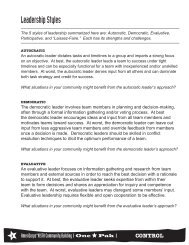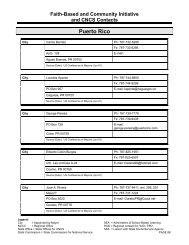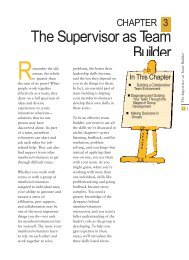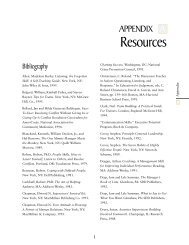MAKE IT LAST FOREVER: THE ... - National Service Resource Center
MAKE IT LAST FOREVER: THE ... - National Service Resource Center
MAKE IT LAST FOREVER: THE ... - National Service Resource Center
You also want an ePaper? Increase the reach of your titles
YUMPU automatically turns print PDFs into web optimized ePapers that Google loves.
are not part of the curriculum or fulfill content standards creates extra work for teachers and students, and therefore contributes to<br />
infrequent use of the pedagogy.<br />
(10) If we start well, other good things follow naturally.<br />
In nature, the establishment of a juniper on a dusty barren slope creates duff, provides food for animals which in turn<br />
drop fertilizer, which in turn acidifies the soil and creates shade so that pine trees can grow and gradually create a mature forest.<br />
In service-learning, if we start with a school philosophy that supports service-learning, there are numerous unknown positive benefits<br />
which will result from that agreement, such as innovative scheduling options, funding availability, parental involvement, in-kind<br />
donations, and a revitalized spirit of faculty camaraderie.<br />
(11) A self-maintaining system self-regulates its growth.<br />
In nature, each species is a model of efficiency in that it takes only the nutrients it requires, conserves them, and<br />
releases surplus to other species. In service-learning, educators and decision-makers carefully examine the resources required to build<br />
and maintain the service-learning infrastructure by assessing professional development, funding, student performance and projects’<br />
successes and impacts, all of which informs the development of future initiatives while increasing operational efficiency and<br />
functionality.<br />
(12) The edge between two media is one of the most productive environments for growth.<br />
In nature, borders between water and land, horizontal and vertical landscapes, and air and soil collect high<br />
concentrations of nutrients so that people and other species can thrive. In service-learning, the pliable boundaries of the school<br />
indicates that the relationship between the school and the community is evolving the nature of learning, as the community begins to<br />
act as the curriculum and the school begins to act as a community center. In the exploration of this edge, new models of productivity,<br />
using service-learning, continue to emerge.<br />
(13) The yield of a system is theoretically unlimited.<br />
In nature, forests will continue to expand if the conditions are supportive, facilitating new species, habitats, food<br />
sources, water cycles, and windbreaks. In service-learning, the only limit to the uses of this instructional method, and the design of the<br />
infrastructure necessary to support it, is the information available to decision-makers and the imagination they have to create what<br />
they wish to see. And the possible results from utilizing the pedagogy are also unlimited, in that we cannot fully understand how these<br />
activities may and do influence human potential or the natural environment.<br />
Strategic Planning<br />
The permaculture principles can inform the design of the service-learning infrastructure because they highlight the<br />
importance of thinking strategically, in multiple dimensions, about the consequences of using the strategies before action is taken.<br />
Once the stakeholders observe, assess, and analyze the educational system, and co-create a vision for the school, district, or state, they<br />
are ready to create action plans.<br />
107


